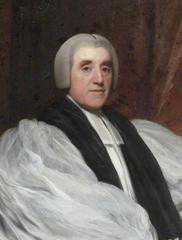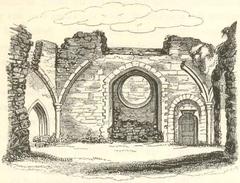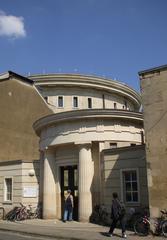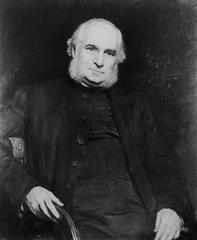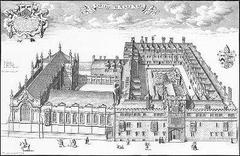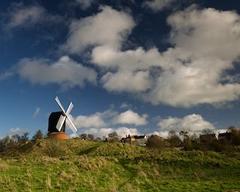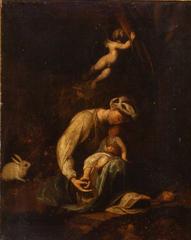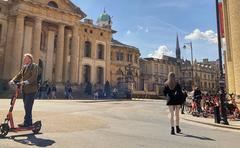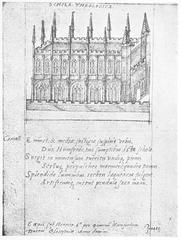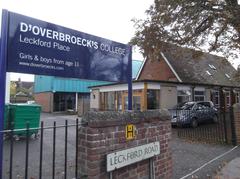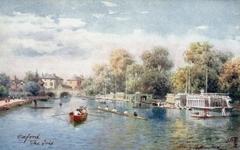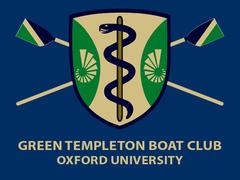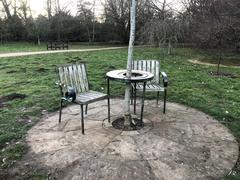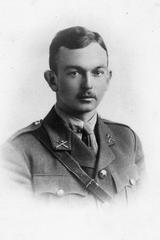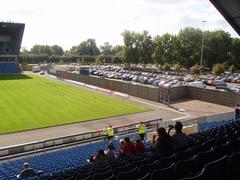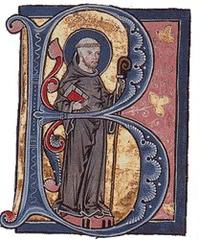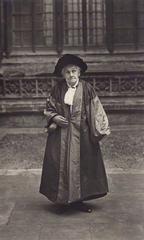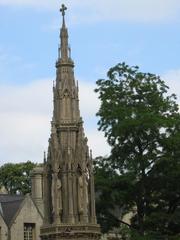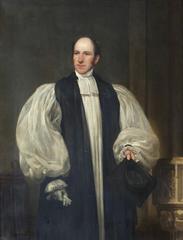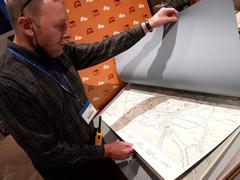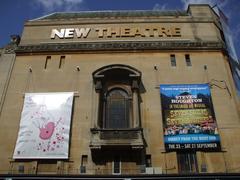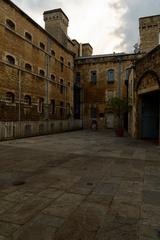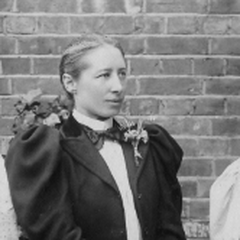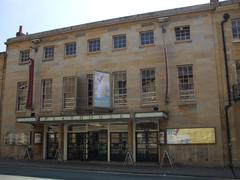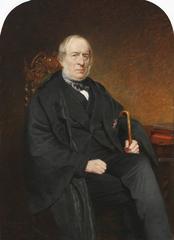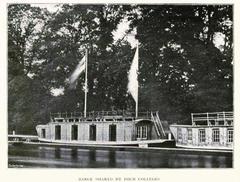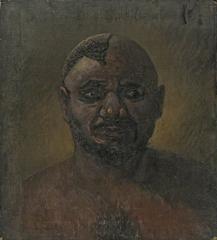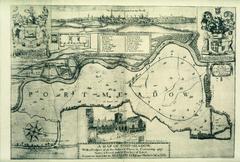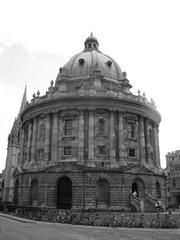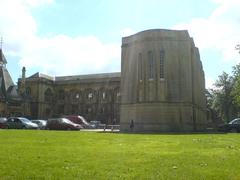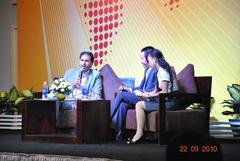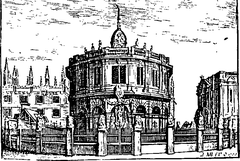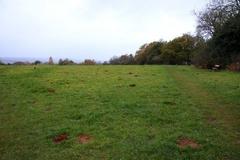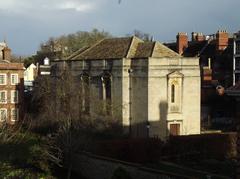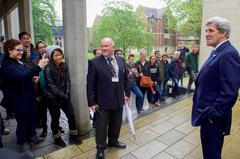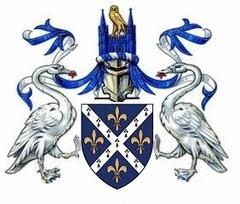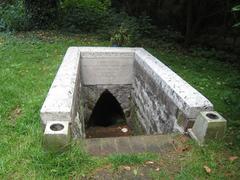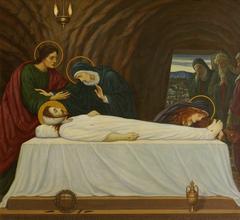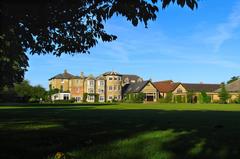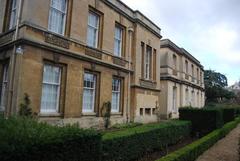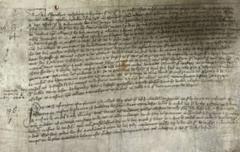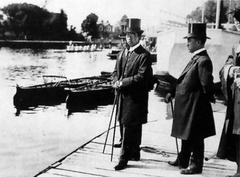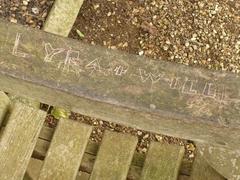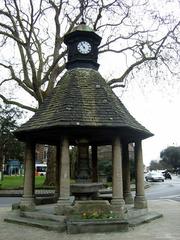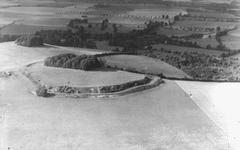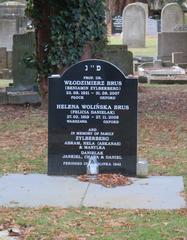Headington, Oxford, United Kingdom: Visiting Hours, Tickets, and Historical Sites Guide
Date: 14/06/2025
Introduction to Headington, Oxford: History, Culture, and Visitor Information
Headington, a vibrant suburb of Oxford, is celebrated for its rich historical roots, cultural significance, and seamless blend of heritage with modern amenities. With origins tracing back to the Saxon era—its name derived from the Old English “Hedena’s hill”—Headington has played a vital role in the development of Oxford. Over centuries, it has served as a royal manor, a key quarrying center providing stone for Oxford’s iconic buildings, and a community for scholars, professionals, and families alike (British History Online, Oxford History Headington).
Today, Headington entices visitors with its historic cottages, the whimsical Headington Shark sculpture, peaceful parks like Headington Hill Park and Shotover Country Park, and its proximity to major institutions such as Oxford Brookes University and the John Radcliffe Hospital (Wikipedia, Oxford Visit). Whether you’re interested in medieval heritage, literary landmarks such as C.S. Lewis’s home at The Kilns, or community traditions like the Headington Quarry Morris Men, this guide provides practical details on visiting hours, ticketing, accessibility, and transportation, ensuring a memorable visit.
Table of Contents
- Introduction
- Early Origins and Saxon Significance
- Medieval Development and Economic Foundations
- Headington and Oxford University: A Historic Relationship
- Social Change and 18th-Century Life
- 19th-Century Expansion and Urbanization
- Incorporation and 20th-Century Growth
- Modern Headington: Education, Medicine, and Community
- Essential Visitor Information
- Key Historical Sites and Attractions
- Food, Drink, and Amenities
- Getting to Headington: Transport and Accessibility
- Parking and Sustainable Travel
- Events, Tours, and Community Activities
- FAQ
- Conclusion and Call to Action
- References
Early Origins and Saxon Significance
Headington’s story begins in the Saxon era, with its name “Hedena’s hill” highlighting its royal associations. Archaeological finds and historical records indicate the area was of strategic importance, serving as a royal manor and potentially the site of a royal palace used by King Ethelred the Unready. The Domesday Book of 1086 records Headington at the center of a substantial royal estate, underscoring its early administrative prominence (British History Online, Oxford History Headington, Parishmouse).
Medieval Development and Economic Foundations
During the medieval period, Headington flourished as a quarrying and brickmaking center. Its high-quality stone was essential for constructing Oxford’s colleges and churches, linking Headington’s fortunes to the city’s growth (British History Online). The village core, Old Headington, retains picturesque stone cottages and historic houses, reflecting its long-standing prosperity. Improved roads and Headington’s elevated location made it popular among Oxford’s scholars and townsfolk (Oxoniensia).
Headington and Oxford University: A Historic Relationship
Beyond providing building materials, Headington was a favored destination for university members seeking leisure. Historical accounts describe students and fellows visiting Headington’s countryside and inns, contributing to the suburb’s lively social fabric (British History Online).
Social Change and 18th-Century Life
In the 18th century, Headington experienced transformation following a fire in 1718 that devastated many dwellings, yet the stone houses endured (Oxford History Headington Timeline). Traditions such as bull-baiting and local fairs reflected a vibrant community spirit. Improved transport links attracted new residents, blending rural charm with increasing urban influence.
19th-Century Expansion and Urbanization
The 19th century brought rapid expansion—population growth, new chapels and schools, and the development of New Headington village. Social reforms were marked by the establishment of the Headington Union Workhouse and the enclosure movement, which facilitated villa construction for affluent residents (Parishmouse, Workhouses.org.uk).
Incorporation and 20th-Century Growth
In 1928, Headington was incorporated into the City of Oxford. The area saw significant housing development, with Bury Knowle House and Park becoming public amenities. Industrial and population growth continued through the postwar years, shaping Headington into a bustling suburb (Oxford History Headington Timeline).
Modern Headington: Education, Medicine, and Community
Today, Headington is a hub for education and healthcare, home to Oxford Brookes University, major hospitals, and diverse communities. Parks and historic sites maintain its green and historic character, while a lively social scene thrives through events, markets, and cultural activities (Wikipedia, Oxford Visit).
Essential Visitor Information
- Visiting Hours: Public parks and most outdoor sites are open daily from dawn to dusk. Churches and museums may have specific hours—check individual websites for details.
- Tickets: Most parks and historical sites are free. Guided tours and some museums may require tickets; advance booking is advised in peak seasons.
- Accessibility: Many sites are wheelchair accessible. For historic buildings, contact the venue ahead of your visit.
- Transportation: Frequent buses connect Headington to Oxford city centre. Cycling and walking are encouraged. Parking is limited—use public transport or Park & Ride when possible.
Key Historical Sites and Attractions
The Headington Shark
A 25-foot fiberglass shark embedded in a house roof at 2 New High Street, installed in 1986. Viewable at all times from the pavement (Oxford Visit).
Headington Hill Hall and Park
A 19th-century mansion (now part of Oxford Brookes University) surrounded by parkland, open daily from dawn to dusk. Free entry; paved paths suitable for wheelchairs (Oxford City Council).
Shotover Country Park
A large SSSI with woodland, heath, and panoramic views. Open 7:00 AM to sunset. Free entry; access from Horspath Road (Oxford City Council).
St Andrew’s Church
A 12th-century parish church with Norman and Victorian features. Open Monday–Saturday, 10:00 AM–4:00 PM; no entry fee (St Andrew’s Church).
Headington Quarry and Morris Men
Historic quarrying district, home to the Headington Quarry Morris Men, one of England’s oldest Morris dancing groups. Performances mainly on May Day and at community events (Historic England).
The Chequers Pub
A Victorian pub in Headington Quarry known for its links to the Morris Men. Open daily, ground floor accessible (Historic England).
The Kilns and CS Lewis Nature Reserve
The home of C.S. Lewis, now a study center with tours by appointment (£10 per person). Adjacent nature reserve open dawn to dusk (CS Lewis Foundation, BBOWT).
Bury Knowle Park
A central park with sensory gardens, tennis courts, and playground. Historic Bury Knowle House now serves as the public library (Oxford City Council).
Headington Farmers’ Market
Held Saturdays, 9:00 AM–1:00 PM on London Road, offering fresh produce and artisanal goods (Headington Market).
Food, Drink, and Amenities
Enjoy a diverse culinary scene, from gastropubs like The Black Boy and classic chippies to international restaurants and cozy cafés. For a comprehensive list, see Headington Restaurants and Cafés.
Getting to Headington: Transport and Accessibility
- By Bus: Frequent services (8, 9, U1, Park & Ride 400/700) link Headington with Oxford city centre and Thornhill Park & Ride.
- By Car: Limited parking; two public car parks with Pay & Display (check Oxford City Council). Consider reserving via JustPark.
- Cycling/Walking: Cycle paths and pedestrian routes from central Oxford.
- Taxi/Rideshare: Local firms and Uber operate throughout Headington.
Accessibility: Most parks and streets are wheelchair accessible. Some historic buildings may have limited facilities.
Parking and Sustainable Travel
- Controlled Parking Zones (CPZs): Enforced throughout Headington—always check street signage (Headington Parking Information).
- Park & Ride: Thornhill is the nearest Park & Ride, with direct buses to Headington.
- EV Charging: Available at Headington car park, Thornhill Park & Ride, and Brookes Headington Hill Campus.
Sustainable Travel: Walking, cycling, and public transport are encouraged. Car-sharing and Co-wheels Car Club offer eco-friendly options (Headington Transport Information).
Events, Tours, and Community Activities
- Guided Tours: Local organizations offer walking tours focusing on Headington’s history, architecture, and literary heritage.
- Annual Events: Look out for Morris dancing (May Day), local fairs, and open days at The Kilns and Headington Hill Hall.
- Family Activities: Science Oxford Centre offers family days and STEM clubs (Science Oxford Centre).
Headington War Memorial: Visiting Information
Overview
The Headington War Memorial honors local servicemen and women from both World Wars. Located at Headley Way and London Road, it is a focal point for Remembrance Day and community reflection.
- Visiting Hours: Open year-round, daylight hours.
- Tickets: Free.
- Accessibility: Wheelchair accessible; some surrounding paths may be sloped.
- Guided Tours: Offered seasonally by local heritage groups.
- Photography: Permitted; visitors should respect the solemn nature of the site (Science Oxford Centre Visitor Information, Headington Parking Information).
Frequently Asked Questions (FAQ)
Q: What historical sites should I visit in Headington?
A: The Headington Shark, Old Headington’s stone cottages, St Andrew’s Church, The Kilns, and the War Memorial.
Q: Are guided tours available?
A: Yes, check with local groups or visitor centers for schedules.
Q: Is Headington family-friendly?
A: Absolutely. Parks, Science Oxford Centre, and playgrounds are ideal for families.
Q: How do I reach Headington from Oxford city centre?
A: By frequent bus services, cycle paths, or a 30-minute walk.
Q: Where can I park?
A: Use the public car parks or Thornhill Park & Ride. Reserve spaces via JustPark.
Q: Are there annual events?
A: Morris dancing, community festivals, and open days are popular.
Conclusion and Call to Action
Headington stands out as a destination where Oxford’s deep-rooted history meets a vibrant, modern community. From Saxon manors and medieval quarries to the literary legacy of C.S. Lewis and the unique charm of the Headington Shark, visitors are invited to immerse themselves in centuries of heritage and contemporary culture. Well-connected, accessible, and full of green spaces and local character, Headington is perfect for families, history lovers, and curious explorers alike.
Plan your visit today—explore guided tours, attend local events, and enjoy Headington’s welcoming atmosphere. For up-to-date information, interactive maps, and exclusive tips, download the Audiala app, and follow us on social media. Discover why Headington remains one of Oxford’s most treasured destinations.
